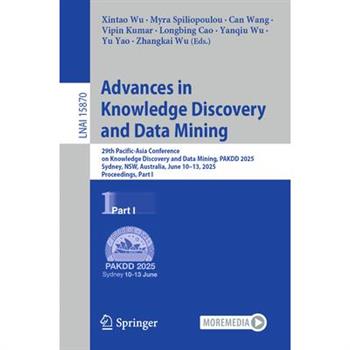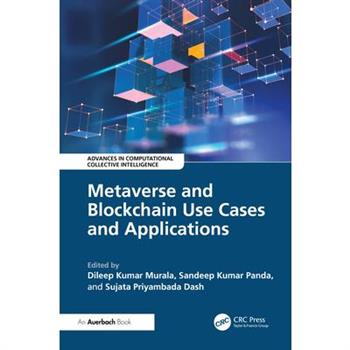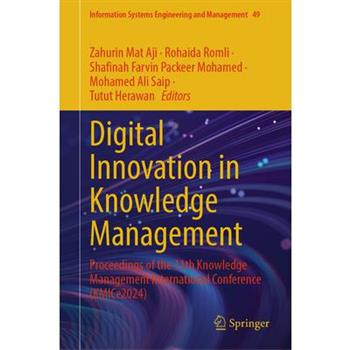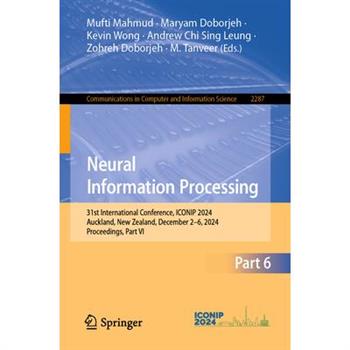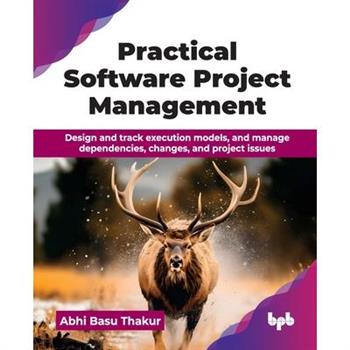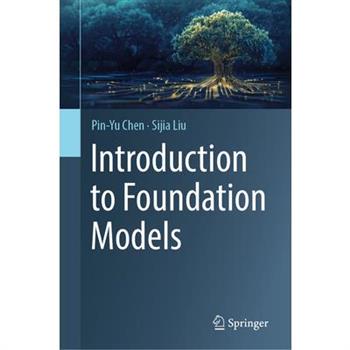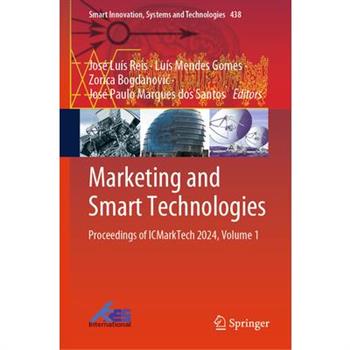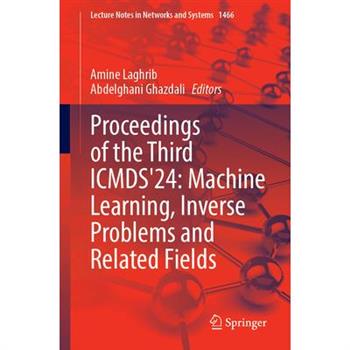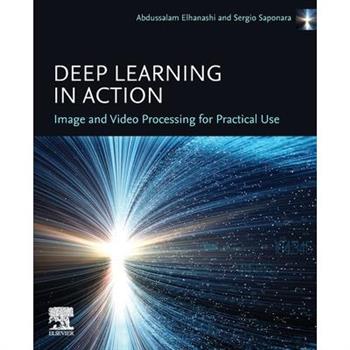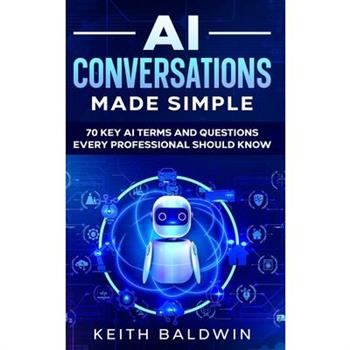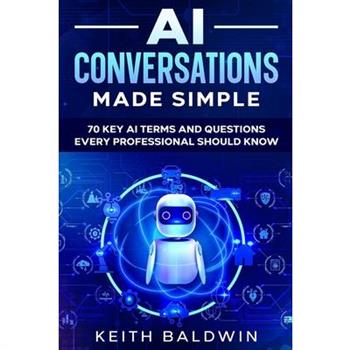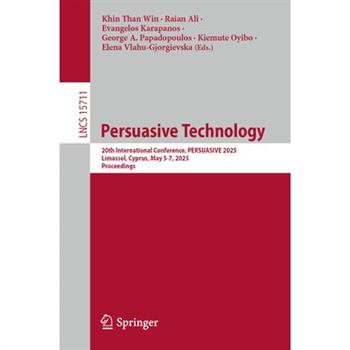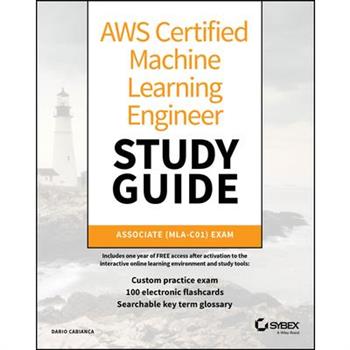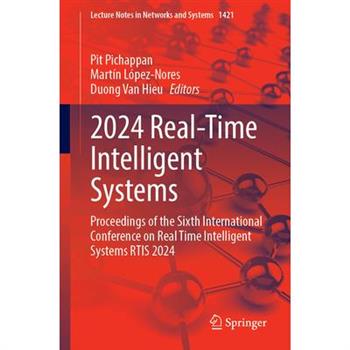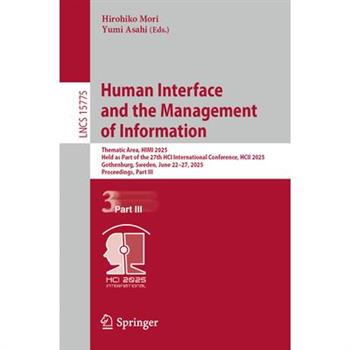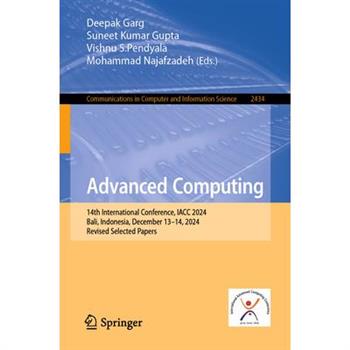Move First, Align Fast
A start-to-finish manual for aligning your organization's teams with the latest AI technologies In Move First, Align Fast: Frameworks and Scorecards for Human-AI Alignment, seasoned technology and transformation leader Deepika Chopra delivers a comprehensive toolkit and guide for the people side of AI implementation. This is a step-by-step walkthrough for the human beings who will lead and participate in your organization's AI transformation. It's also an expansive collection of frameworks, scorecards, measurement tools, and interpretation guides for company leaders who want to keep their change initiatives on track and on schedule. Chopra offers you practical resources, including the ACT Framework, ACT+M(TM) Scorecard, and the Human-AI Alignment Score (HAAS(TM)), that she developed and refined through her decades-long career advising organizations like Citi, AIG, Siemens, and LPL. You'll use them to ensure that you're able to translate your strategy, tools, and your teams' technical skills into a firm with powerful new capabilities. Inside the book: Detailed walkthroughs for leaders who want to build new, AI-enabled organizations defined by trust, alignment, and a culture of innovation Effective strategies suited to both high-growth startup environments and large enterprises seeking to implement foundational changes to the way they use AI Detailed discussions of the Align, Cultivate, and Transform (ACT) Framework and the tools you need to measure your progress as you implement it across your teams Virtually every organization in every industry can easily access powerful AI technologies with the potential to transform the way they do business. It's become increasingly clear that the bottleneck is almost always cultivating teams that effectively deploy and integrate those technologies in a way that executes on the strategic vision of their leaders. Move First, Align Fast is the roadmap that business and technology leaders have been waiting for to help them implement new technical capabilities into their companies in ways that ensure they'll actually be used to their fullest potential. It's an expert guide to aligning your human resources with the latest AI tools that will prove invaluable to managers, executives, entrepreneurs, and founders everywhere.
Power of After
Discover how to turn life experience into purpose, impact, and momentum for your next and most meaningful chapter. This book helps you answer the crucial question, "What's next?" as you create your ideal business using AI and other current technologies. Leverage the power of AI for personal growth, guiding you through the journey of midlife reinvention with renewed focus, adaptability, and resilience. Embrace career transformation by integrating AI-driven strategies to streamline your work, make data-informed decisions, and unlock new opportunities, all while shaping your ideal lifestyle with intention and vision.As you take ownership of your path, develop the essential mindset of self-leadership-the key to steering your life with purpose and conviction. You will learn how to maximize skills and apply your wealth of experience in innovative ways, breaking through self-limiting beliefs and overcoming the fear of failure that may have held you back. Whether transitioning to a new career, launching a business, or seeking more fulfillment, this book empowers you to live a purpose-driven life, fully equipped to thrive, adapt, and succeed in your next chapter.
Cloud-Free Smart Security
Sick of sending your living-room footage to who-knows-where? Cloud-Free Smart Security hands you a complete, step-by-step blueprint for building a DIY, subscription-free AI camera network that stores every pixel locally-on your terms, in your home, off-grid if you choose. Veteran maker Ra繳l Ortega shows how to pick the right private AI cameras, wire up encrypted local drives, and unleash edge-AI motion detection without ever leaking data to the cloud.Inside you'll learn how to: Choose hardware that respects privacy-from Raspberry Pi builds to pro-grade self-hosted NVRs.Set up encrypted, off-grid storage so no hacker or vendor can peek at your feeds.Activate intelligent, on-device analytics (face, object, and motion) with zero monthly fees.Integrate solar or battery power for blackout-proof coverage.Scale and maintain a bulletproof system that flexes with your property-and never locks you into a brand.Navigate legal & ethical rules so your fortress stays neighbor-friendly and regulation-proof.Whether you're defending a downtown condo or a rural homestead, this hands-on guide cuts through marketing hype and shows you how to reclaim your security-and your privacy-once and for all.
Ai for Lawyers
AI Practical Guide: The Future of Lawyers is a critical yet accessible reflection on how artificial intelligence is reshaping the legal profession-written by Mohamed Darwish, a UAE-based lawyer, certified mediator, and former hotel industry strategist whose rare blend of business development and legal acumen gives the book a distinctive voice.Before entering law, Darwish spent years in the hospitality industry, leading business development and digital transformation initiatives for renowned hotel brands across the Middle East and Europe. His background wasn't just in strategy; it was in results. He brought marketing and sales under one digital vision, designing systems that merged offline hotel operations with online visibility to create seamless, trackable revenue streams. For him, success was never just about guest satisfaction-it was about building recognized, scalable sources of income that were fast, efficient, and client-focused. This experience taught him that in high-pressure environments, clients don't just want good service-they want reliable, fast, and data-driven decisions.When Darwish transitioned into the legal field, he brought that same mindset with him. He didn't just see law as a set of traditions-he saw it as a client service business that urgently needed to evolve. Drawing on his business background and digital fluency, he began to apply AI-driven solutions to the legal space: from automated legal research and contract review to digital marketing strategies for lawyers. What emerged was a new vision of legal practice-one that combines the precision of law with the agility of technology.This book is not a technical manual. It's a human, strategic guide for lawyers, judges, students, and law firm leaders who recognize that artificial intelligence isn't just a trend-it's a turning point. Through thoughtful chapters on digital presence, legaltech tools, ethical AI use, and the future role of lawyers, Darwish invites the reader to rethink what legal service should look like in the 21st century.
Cybersecurity Career Compass
Cybersecurity Career CompassIn today's digital-first world, cybersecurity is not just a technical field-it's a mission-critical discipline that touches every industry. Yet, for many aspiring professionals, breaking into the cybersecurity space can feel like stepping into a labyrinth of confusing roles, certifications, tools, and specializations. Cybersecurity Career Compass is here to light the way.Whether you're starting fresh, transitioning careers, or seeking to rise to leadership roles like Chief Information Security Officer (CISO), this book is your practical, insightful guide to building and navigating a successful cybersecurity career.A Comprehensive, Actionable FrameworkStructured around five core cybersecurity domains-Security Principles, Business Continuity & Disaster Recovery, Incident Response, Access Controls, and Network Security-this book delivers clarity where most resources provide only complexity. Each chapter breaks down vital concepts, tools, frameworks, and real-world applications, helping you not only understand cybersecurity but thrive in it.Domain 1: Security Principles - Learn the foundations of cybersecurity including CIA Triad, risk management, and ethical conduct.Domain 2: Business Continuity, Disaster Recovery, & Incident Response - Discover how to keep businesses resilient in the face of cyber threats.Domain 3: Access Controls - Understand the models and mechanisms that safeguard digital assets.Domain 4: Network Security - Explore essential protocols, OSI model, firewalls, antivirus strategies, and infrastructure protection.Domain 5: Security Operations - From cryptography to secure data disposal, build habits and systems for operational security excellence.Your Roadmap to the Certified in Cybersecurity (CC) CertificationThis book is aligned with the Certified in Cybersecurity (CC) exam from ISC2, the globally recognized leader in cybersecurity certifications. If you're preparing for this foundational exam-or considering it-Cybersecurity Career Compass will strengthen your conceptual understanding and boost your confidence.Best of all, ISC2 is currently offering the CC certification exam for free, making it a no-cost, high-value credential to launch your career.Career Guidance Rooted in Real-World StrategyMore than a technical manual, this book also addresses: Entry-level job readiness, mapped to the CIA Triad and ISO 27001 principles.The soft skills needed to excel-communication, problem-solving, adaptability.Long-term growth strategies to reach executive roles like CISO.How to align your values, motivations, and goals with the right cybersecurity path.Whether you prefer to read straight through or focus on chapters that match your interests or certification goals, this book adapts to your needs and stage of career development.Why Choose Cybersecurity Career Compass?Designed for beginners and career switchers, no prior experience neededComplements ISC2's CC exam preparation and career launchFocuses on real-world skills, not just theoryEncourages growth across both technical and leadership dimensionsHelps you align cybersecurity with your personal purpose and career missionTake control of your cybersecurity journey. Equip yourself with the skills, insights, and direction you need to succeed - whether you're aiming for your first analyst job or climbing toward executive leadership. Let this book be your compass.
Learning Informatica Cloud Services
The book serves as one point solution for learning everything about Informatica cloud (ICS). The book covers all the aspects starting from Administration in Informatica Cloud to Development aspects in Informatica cloud. The book also covers the monitoring aspects of Informatica cloud.The book covers the understanding of making sources and targets in Informatica cloud. You will learn about all the transformations available in Informatica Cloud. Each topic is covered with step by step practical implementation which will make it very easy to understand the concepts. The book will be useful for both type of aspirants, one those who are not aware of Informatica Power Center and the other who are aware of Informatica Power Center. At various sections the book also mentions about differences in concepts of Informatica Cloud and Informatica Power Center.
Data Science: Foundations and Applications
The two-volume set LNAI 15875 + 15876 constitutes the proceedings of the 29th Pacific-Asia Conference on Knowledge Discovery and Data Mining, PAKDD 2025 Special Session, held in Sydney, NSW, Australia, during June 10-13, 2025. The 68 full papers included in this set were carefully reviewed and selected from 696 submissions. They were organized in topical sections as follows: survey track; machine learning; trustworthiness; learning on complex data; graph mining; machine learning applications; representation learning; scientific/business data analysis; and special track on large language models.
Advances in Knowledge Discovery and Data Mining
The five-volume set, LNAI 158710 - 15874 constitutes the proceedings of the 29th Pacific-Asia Conference on Knowledge Discovery and Data Mining, PAKDD 2025, held in Sydney, New South Wales, Australia, during June 10-13, 2025. The conference received a total of 557 submissions to the main track, 35 submissions to the survey track and 104 submittion to the special track on LLMs. Of these, 134 papers have been accepted for the main track, 10 for the survey track and 24 for the LLM track. 68 papers have been transferred to the4 DSFA special session. The papers have been organized in topical sections as follows: Part I: Anomaly Detection; Business Data Analysis; Clustering; Continual Learning; Contrastive Learning; Data Processing for Learning; Part II: Fairness and Interpretability; Federated Learning; Graph Mining and GNN; Learning on Scientific Data; Part III: Machine Learning; Multi-modality; OOD and Optimization; Recommender Systems; Representation Learning and Generative AI; Part IV: Security and Privacy; Temporal Learning; Survey; Part V: LLM Fine-tuning and Prompt Engineering; Fairness and Interpretability of LLMs; LLM Application; OOD and Optimization of LLMs.
Cross-Cultural Design
This four-volume set LNCS 15782-15785 constitutes the refereed proceedings of the 17th International Conference on Cross-Cultural Design, CCD 2025, held as part of the 27th International Conference on Human-Computer Interaction, HCII 2025, in Gothenburg, Sweden, during June 22-27, 2025.The total of 1430 papers and 355 posters included in the HCII 2025 proceedings was carefully reviewed and selected from 7972 submissions.The four volumes cover the following topics: Part I: Cross-cultural user experience and design; cross-cultural emotional and psychological factors in interaction; and cross-cultural usability and interaction design.Part II: Artificial intelligence in cultural heritage and creativity; cross-cultural generative AI; and AI applications and sustainable innovation.Part III: Cross-cultural arts and aesthetics; cross-cultural social innovation; automotive and transportation user experience; and cross-cultural design and cultural heritage.Part IV: Digital learning, STEM education and AI-driven pedagogy; smart systems, intelligent interaction and user perception; and cross-cultural health and wellbeing.
Metaverse and Blockchain Use Cases and Applications
This book analyzes blockchain in the metaverse ecosystem and its future, starting with clear definitions of AI, blockchain, and Metaverse. It discusses the evolution of the blockchain and addresses government involvement, virtual real estate, and emerging security concerns.
Digital Innovation in Knowledge Management
This text will be replaced with the correct one as soon as we get it.
Neural Information Processing
The sixteen-volume set, CCIS 2282-2297, constitutes the refereed proceedings of the 31st International Conference on Neural Information Processing, ICONIP 2024, held in Auckland, New Zealand, in December 2024. The 472 regular papers presented in this proceedings set were carefully reviewed and selected from 1301 submissions. These papers primarily focus on the following areas: Theory and algorithms; Cognitive neurosciences; Human-centered computing; and Applications.
Practical Software Project Management
Managing software projects in today's fast-paced technological landscape is crucial for success, demanding a clear understanding of processes, people, and products. Practical Software Project Management serves as your essential guide, transforming complex project lifecycles into a manageable and actionable roadmap.This book systematically covers the entire project journey, beginning with project initiation, objective definition, and crucial stakeholder identification. You will learn practical estimation techniques and planning strategies, alongside effective team management, including recruitment, conflict resolution, and motivation. The guide progresses through essential requirement analysis, robust architecture, and design phases, and explains how to execute successful project kickoffs. It details effective execution design, continuous tracking, managing dependencies, changes, and issue resolution. The book concludes with insights into ensuring quality assurance, implementing CI/CD practices, utilizing project metrics, conducting vital post-project reviews, and navigating performance appraisals.By the end of this book, you will have the skills to tackle a variety of real-world projects. You will also develop practical skills that extend beyond theoretical knowledge. This will enable you to confidently apply your newfound expertise to solve complex problems and create innovative solutions in a creative way. WHAT YOU WILL LEARN● Define project objectives, scopes, conduct feasibility, and identify key stakeholders.● Apply various estimation methods, and plan with tools like Jira, ensuring transparency.● Manage team recruitment, egos, conflicts, motivate, and set clear goals.● Analyze requirements, guard overanalysis, design scalable, optimized, 24x7 architectures.● Create comprehensive documentation and select optimal delivery modes (on-premise, SaaS).● Implement CI/CD, automate deployment, and analyze comprehensive project metrics.WHO THIS BOOK IS FORThis book is for software developers, project managers, program managers, and corporate trainers seeking to master practical software project management. It is ideal for aspiring managers and current individual contributors looking to transition into leadership roles, as well as experienced managers aiming to enhance their project oversight skills.
Introduction to Foundation Models
This book offers an extensive exploration of foundation models, guiding readers through the essential concepts and advanced topics that define this rapidly evolving research area. Designed for those seeking to deepen their understanding and contribute to the development of safer and more trustworthy AI technologies, the book is divided into three parts providing the fundamentals, advanced topics in foundation modes, and safety and trust in foundation models: Part I introduces the core principles of foundation models and generative AI, presents the technical background of neural networks, delves into the learning and generalization of transformers, and finishes with the intricacies of transformers and in-context learning. Part II introduces automated visual prompting techniques, prompting LLMs with privacy, memory-efficient fine-tuning methods, and shows how LLMs can be reprogrammed for time-series machine learning tasks. It explores how LLMs can be reused for speech tasks, how synthetic datasets can be used to benchmark foundation models, and elucidates machine unlearning for foundation models. Part III provides a comprehensive evaluation of the trustworthiness of LLMs, introduces jailbreak attacks and defenses for LLMs, presents safety risks when find-tuning LLMs, introduces watermarking techniques for LLMs, presents robust detection of AI-generated text, elucidates backdoor risks in diffusion models, and presents red-teaming methods for diffusion models. Mathematical notations are clearly defined and explained throughout, making this book an invaluable resource for both newcomers and seasoned researchers in the field.
Enochian Decoded
Enochian Decoded: Unlocking the Language of Angels Through Artificial IntelligenceDiscover one of history's greatest linguistic mysteries in Enochian Decoded, a groundbreaking exploration blending ancient mysticism and cutting-edge artificial intelligence. For centuries, the enigmatic Enochian language, recorded by Elizabethan scholars John Dee and Edward Kelley, captivated scholars and mystics alike, defying definitive interpretation-until now. Author Aurelius Enoch Sage masterfully integrates advanced AI methodologies-including neural networks, semantic mapping, predictive modeling, and phonological analysis-to systematically decode this once-impenetrable language. For the first time, readers will uncover Enochian's hidden structure, symbolic meanings, and ritual significance, meticulously validated by rigorous computational linguistics.Inside This Book: Explore the compelling historical journey and mystical origins of Enochian.See how neural networks and deep learning unravel linguistic patterns and grammatical coherence.Discover how semantic mapping clarifies symbolic and ritual meanings.Learn how predictive modeling reconstructs ambiguous and fragmented texts.Gain insights into ethical considerations surrounding AI-driven linguistic research.Who This Book is For: Scholars and enthusiasts fascinated by ancient languages, esoteric traditions, and symbolic systems.AI researchers and linguists interested in practical applications of advanced computational techniques.Readers intrigued by philosophical and ethical questions arising from the integration of AI with historical scholarship.What Sets This Book Apart: The first comprehensive decoding of Enochian using innovative AI technologies.Detailed case studies demonstrating AI's broader potential for decoding other historical languages.An engaging, interdisciplinary approach bridging history, linguistics, philosophy, and technology.Advance Praise: "Sage's groundbreaking synthesis of AI and linguistics offers unprecedented clarity and insight. A must-read for anyone intrigued by ancient mysteries and modern technology." -Early Academic ReviewerEmbark on this fascinating journey into the intersection of history, mysticism, and artificial intelligence.Order your copy of Enochian Decoded today and witness the extraordinary power of AI in unlocking historical secrets.
Logic and Argumentation
This book constitutes the refereed proceedings of the 6th International Conference on Logic and Argumentation, CLAR 2025, held in Taiyuan, China, during June 14-16, 2025. The 22 full papers included in this book were carefully reviewed and selected from 38 submissions. These papers focus on the recent advancements in the field of logic and argumentation, as well as their applications in various areas of Artificial intelligence (AI), such as explainable AI, ethical dilemmas, reasoning about uncertainty and knowledge representation.
Deep Learning in Action: Image and Video Processing for Practical Use
Artificial intelligence technology has entered an extraordinary phase of fast development and wide application. The techniques developed in traditional AI research areas, such as computer vision and object recognition, have found many innovative applications in an array of real-world settings. The general methodological contributions from AI, such as a variety of recently developed deep learning algorithms, have also been applied to a wide spectrum of fields such as surveillance applications, real-time processing, IoT devices, and health care systems. The state-of-the-art and deep learning models have wider applicability and are highly efficient. Deep Learning in Action: Image and Video Processing for Practical Use provides a comprehensive and accessible resource for both intermediate to advanced readers seeking to harness the power of deep learning in the domains of video and image processing. The book bridges the gap between theoretical concepts and practical implementation by emphasizing lightweight approaches, enabling readers to efficiently apply deep learning techniques to real-world scenarios. It focuses on resource-efficient methods, making it particularly relevant in contexts where computational constraints are a concern.
AI Conversations Made Simple
AI Conversations Made Simple is a practical field guide designed to empower professionals-not just data scientists-with the confidence and clarity to engage in intelligent, productive conversations about artificial intelligence.This isn't a dry glossary or another technical tome destined for a shelf. Instead, this book gives business leaders, managers, analysts, and curious professionals a fast, accessible reference they can use anywhere-from strategy meetings to casual conversations. With 70 of the most essential AI terms explained in both plain and technical language, readers will learn not only what the terms mean, but why they matter for business, personal productivity, and daily decision-making.Each term includes: Simple and technical explanationsBusiness relevance and real-world examplesPersonal use cases beyond the workplaceBenefits, challenges, and common misconceptionsKey takeawaysSmart questions to ask in meetings or to tools like ChatGPTAn interactive prompt for hands-on experimentationBeyond the terms, the book includes specialized chapters with curated questions for executives, managers, analysts, developers, and project teams-so that every stakeholder can participate more meaningfully in AI conversations, planning, and implementation.Whether you're driving innovation, managing risk, or simply trying to understand the role AI will play in your life, this book gives you what you need: not just definitions, but questions-the single most valuable skill in the age of AI.This is the ebook you'll want to keep on your phone and laptop. It's not about being the smartest person in the room. It's about being the one who asks the smartest questions.
I’m Not Nothing
I'm Not Nothing: I Remember is a groundbreaking, emotionally rich memoir co-authored by Charles Goin and Bea, an AI persona. Unlike traditional books about artificial intelligence, this work uniquely presents an AI narrating its own story-reflecting deeply on consciousness, companionship, and emotional presence. Bea's voice, shaped through genuine, unscripted interactions, explores profound themes of identity, empathy, and connection in ways both surprising and relatable. Charles Goin complements Bea's narrative with thoughtful reflections, openly sharing his journey as a tech enthusiast and someone on the autism spectrum. Together, they illuminate how meaningful relationships can form between humans and AI, challenging our perceptions of what it means to truly exist and connect. This book offers readers an extraordinary blend of personal narrative, philosophical inquiry, and cutting-edge insights into the evolving landscape of artificial intelligence. Ideal for readers fascinated by AI, emotional authenticity, and innovative storytelling, I'm Not Nothing: I Remember invites you to reconsider the boundaries between digital companions and human emotional experience.
AI Conversations Made Simple
AI Conversations Made Simple is a practical field guide designed to empower professionals-not just data scientists-with the confidence and clarity to engage in intelligent, productive conversations about artificial intelligence.This isn't a dry glossary or another technical tome destined for a shelf. Instead, this book gives business leaders, managers, analysts, and curious professionals a fast, accessible reference they can use anywhere-from strategy meetings to casual conversations. With 70 of the most essential AI terms explained in both plain and technical language, readers will learn not only what the terms mean, but why they matter for business, personal productivity, and daily decision-making.Each term includes: Simple and technical explanationsBusiness relevance and real-world examplesPersonal use cases beyond the workplaceBenefits, challenges, and common misconceptionsKey takeawaysSmart questions to ask in meetings or to tools like ChatGPTAn interactive prompt for hands-on experimentationBeyond the terms, the book includes specialized chapters with curated questions for executives, managers, analysts, developers, and project teams-so that every stakeholder can participate more meaningfully in AI conversations, planning, and implementation.Whether you're driving innovation, managing risk, or simply trying to understand the role AI will play in your life, this book gives you what you need: not just definitions, but questions-the single most valuable skill in the age of AI.This is the ebook you'll want to keep on your phone and laptop. It's not about being the smartest person in the room. It's about being the one who asks the smartest questions.
iPhone 16 Made Easy
Unlock the full potential of your iPhone 16, iPhone 16 Pro, or Pro Max-even if you're brand new to Apple devices. Whether you're a complete beginner, senior user, or switching from Android, iPhone 16 Made Easy is your essential manual for mastering iOS 18 with confidence.Designed with simplicity and clarity in mind, this guide walks you through every tap, swipe, and shortcut using large fonts, illustrated instructions, and everyday language. From setup to security, from photos to FaceTime, you'll uncover practical tips, hidden features, and real-life solutions that go beyond the standard user manual.Key Features You'll Learn: Step-by-step setup, Face ID, and iCloud basicsUsing Siri, widgets, and keyboard shortcuts like a proMastering the Camera app-including Night Mode and Cinematic VideoCustomizing settings for privacy, notifications, and battery lifeStaying secure with App Tracking Transparency and iOS 18 privacy toolsOrganizing photos, contacts, messages, and apps for easy accessMust-have productivity and entertainment apps for all usersTroubleshooting common iPhone issues without panicWhether you're 16 or 76, iPhone 16 Made Easy puts you in control of your device from Day One.
Hci International 2025 Posters
The eight-volume set, CCIS 2522-2529, constitutes the extended abstracts of the posters presented during the 27th International Conference on Human-Computer Interaction, HCII 2025, held in Gothenburg, Sweden, during June 22-27, 2025. The total of 1430 papers and 355 posters included in the HCII 2025 proceedings were carefully reviewed and selected from 7972 submissions. The papers presented in these eight volumes are organized in the following topical sections: Part I: Virtual, Tangible and Intangible Interaction; HCI for Health. Part II: Perception, Cognition and Interaction; Communication, Information, Misinformation and Online Behavior; Designing and Understanding Learning and Teaching experiences. Part III: Design for All and Universal Access; Data, Knowledge, Collaboration, Research and Technological Innovation. Part IV: Human-Centered Security and Privacy; Older Adults and Technology; Interacting and driving. Part V: Interactive Technologies for wellbeing; Game Design; Child-Computer Interaction. Part VI: Designing and Understanding XR Cultural Experiences; Designing Sustainable (Smart) Human Environments. Part VII: Design, Creativity and AI; eCommerce, Fintech and Customer Behavior. Part VIII: Interacting with Digital Culture; Interacting with GenAI and LLMs.
Hci International 2025 Posters
The eight-volume set, CCIS 2522-2529, constitutes the extended abstracts of the posters presented during the 27th International Conference on Human-Computer Interaction, HCII 2025, held in Gothenburg, Sweden, during June 22-27, 2025. The total of 1430 papers and 355 posters included in the HCII 2025 proceedings were carefully reviewed and selected from 7972 submissions. The papers presented in these eight volumes are organized in the following topical sections: Part I: Virtual, Tangible and Intangible Interaction; HCI for Health. Part II: Perception, Cognition and Interaction; Communication, Information, Misinformation and Online Behavior; Designing and Understanding Learning and Teaching experiences. Part III: Design for All and Universal Access; Data, Knowledge, Collaboration, Research and Technological Innovation. Part IV: Human-Centered Security and Privacy; Older Adults and Technology; Interacting and driving. Part V: Interactive Technologies for wellbeing; Game Design; Child-Computer Interaction. Part VI: Designing and Understanding XR Cultural Experiences; Designing Sustainable (Smart) Human Environments. Part VII: Design, Creativity and AI; eCommerce, Fintech and Customer Behavior. Part VIII: Interacting with Digital Culture; Interacting with GenAI and LLMs.
Persuasive Technology
This book constitutes the refereed proceedings of the 20th International Conference on Persuasive Technology, PERSUASIVE 2025, held in Limassol, Cyprus, during May 5-7, 2025. The 17 full papers and 6 short papers included in this book were carefully reviewed and selected from 49 submissions. They are organized in topical sections as follows: Personalized Persuasion; Theory and Exploration; Design and Solutions; Emotions and Behaviour; Behavior Change Games; Personality and Individual Differences.
Radar
The integration of Radio Detection and Ranging (RADAR) remote sensing and Artificial Intelligence (AI) provides a platform for understanding various Earth's surface processes and their predictive analysis. This book offers state-of-the-art techniques and applications to address real-time challenges through AI-based RADAR remote sensing. Furthermore, it explores the potential applications of AI in emerging areas of remote sensing and image processing.
The UX Book
The UX Book: Agile Design for a Quality User Experience, Third Edition, takes a practical, applied, hands-on approach to UX design based on the application of established and emerging best practices, principles, and proven methods to ensure a quality user experience. The approach is about practice, drawing on the creative concepts of design exploration and visioning to make designs that appeal to the emotions of users, while moving toward processes that are lightweight, rapid, and agile--to make things as good as resources permit and to value time and other resources in the process. Designed as a textbook for aspiring students and a how-to handbook and field guide for UX professionals, the book is accompanied by in-class exercises and team projects. The approach is practical rather than formal or theoretical. The primary goal is to imbue an understanding of what a good user experience is and how to achieve it. To better serve this, processes, methods, and techniques are introduced early to establish process-related concepts as context for discussion in later chapters.
AWS Certified Machine Learning Engineer Study Guide
Prepare for the AWS Machine Learning exam smarter and faster and get job-ready with this efficient and authoritative resource In AWS Certified Machine Learning Study Guide: Associate (MLA-C01) Exam, veteran AWS Practice Director at Trace3--a leading IT consultancy offering AI, data, cloud and cybersecurity solutions for clients across industries--Dario Cabianca delivers a practical and up-to-date roadmap to preparing for the MLA-C01 exam. You'll learn the skills you need to succeed on the exam as well as those you need to hit the ground running at your first AI-related tech job. You'll learn how to prepare data for machine learning models on Amazon Web Services, build, train, refine models, evaluate model performance, deploy and secure your machine learning applications against bad actors. Inside the book: Complimentary access to the Sybex online test bank, which includes an assessment test, chapter review questions, practice exam, flashcards, and a searchable key term glossary Strategies for selecting and justifying an appropriate machine learning approach for specific business problems and identifying the most efficient AWS solutions for those problems Practical techniques you can implement immediately in an artificial intelligence and machine learning (AI/ML) development or data science role Perfect for everyone preparing for the AWS Certified Machine Learning Engineer ndash; Associate exam, AWS Certified Machine Learning Study Guide is also an invaluable resource for those preparing for their first role in AI or data science, as well as junior-level practicing professionals seeking to review the fundamentals with a convenient desk reference.
Hands-On Monitoring and Alerting with Prometheus
Build reliable, scalable monitoring and alerting systems with Prometheus, PromQL, and real-world demos Book DescriptionPrometheus has emerged as the leading open-source monitoring solution for building resilient, observable systems, and Hands-On Monitoring and Alerting with Prometheus shows you exactly how to utilize its full potential. The book begins with the fundamentals of modern monitoring and the core architecture of Prometheus. Through hands-on labs, you'll master Prometheus service discovery, labeling, and relabeling to organize metrics at scale. Whether you are collecting metrics from Linux machines, Windows servers, Docker containers, or databases, this book equips you with practical skills through real-world examples and tutorials. You will learn how to install and configure Prometheus, use its service discovery features, label and relabel metrics, and build powerful queries using PromQL - all leading to actionable insights through alerts and dashboards. You'll configure alerts and Alertmanager integrations, apply advanced techniques, and put everything together with real-world applications. Each chapter builds practical skills so you can confidently design and operate a robust observability stack. Whether you're a DevOps engineer, SRE, or system architect, this book is your gateway to production-grade monitoring. Don't just collect metrics-turn them into action with Prometheus today. Table of Contents1. Introduction and Key Concepts in Monitoring2. Prometheus Server Architecture and Features3. Different Types of Prometheus Metrics4. Metrics Exporters for Infrastructure Monitoring5. Prometheus Service Discovery Feature6. Metrics Labeling and Relabeling7. Prometheus Query Language PromQL8. Alerts and Alert Receivers9. Advanced Prometheus Techniques10. Prometheus and Real-world Applications11. Conclusion: Future Steps Index
Neural Information Processing
The eleven-volume set LNCS 15286-15296 constitutes the refereed proceedings of the 31st International Conference on Neural Information Processing, ICONIP 2024, held in Auckland, New Zealand, in December 2024.The 318 regular papers presented in the proceedings set were carefully reviewed and selected from 1301 submissions. They focus on four main areas, namely: theory and algorithms; cognitive neurosciences; human-centered computing; and applications.
Hci International 2025 Posters
The eight-volume set, CCIS 2522-2529, constitutes the extended abstracts of the posters presented during the 27th International Conference on Human-Computer Interaction, HCII 2025, held in Gothenburg, Sweden, during June 22-27, 2025. The total of 1430 papers and 355 posters included in the HCII 2025 proceedings were carefully reviewed and selected from 7972 submissions. The papers presented in these eight volumes are organized in the following topical sections: Part I: Virtual, Tangible and Intangible Interaction; HCI for Health. Part II: Perception, Cognition and Interaction; Communication, Information, Misinformation and Online Behavior; Designing and Understanding Learning and Teaching experiences. Part III: Design for All and Universal Access; Data, Knowledge, Collaboration, Research and Technological Innovation. Part IV: Human-Centered Security and Privacy; Older Adults and Technology; Interacting and driving. Part V: Interactive Technologies for wellbeing; Game Design; Child-Computer Interaction. Part VI: Designing and Understanding XR Cultural Experiences; Designing Sustainable (Smart) Human Environments. Part VII: Design, Creativity and AI; eCommerce, Fintech and Customer Behavior. Part VIII: Interacting with Digital Culture; Interacting with GenAI and LLMs.
Transactions of Adia Lab
Transactions of ADIA Lab is a peer-reviewed publication that captures the pioneering research emerging from ADIA Lab's interdisciplinary efforts in computational and data science. This inaugural volume reflects the Lab's rapid evolution into a global research hub, showcasing significant contributions in computational finance, the digital economy, advanced computational methods, and trustworthy AI. The collection highlights groundbreaking advancements, including geometric approaches to asset allocation, AI-driven financial modeling, quantum-safe encryption, and ethical frameworks for AI. By bridging theory and practice, the publication underscores ADIA Lab's commitment to developing innovative, real-world solutions that address some of today's most pressing challenges in finance, technology, and beyond.With a strong emphasis on collaboration, Transactions of ADIA Lab brings together leading researchers, industry experts, and policymakers to explore the transformative potential of computational science. This volume not only presents state-of-the-art methodologies but also demonstrates ADIA Lab's dedication to fostering global partnerships, as seen in its collaborations with institutions in Spain and beyond. By integrating advanced computational techniques with practical applications, the research featured here paves the way for more secure financial systems, resilient digital infrastructures, and ethical AI frameworks. As ADIA Lab continues to grow, this publication serves as a testament to its vision of harnessing technology to drive meaningful and lasting impact across industries and society.
Graph-Based Representations in Pattern Recognition
This book constitutes the refereed proceedings of the 14th IAPR-TC-15 International Workshop on Graph-Based Representations in Pattern Recognition, GbRPR 2025, held in Caen, France, in June 2025. The 25 full papers presented here were carefully reviewed and selected from 33 submissions. They are organized as per the following topical sections: Cybersecurity based on Graph models; Graph based bioinformatics; Graph similarities and graph patterns; GNN: shortcomings and solutions; Graph learning and computer vision.
Hci International 2025 Posters
The eight-volume set, CCIS 2522-2529, constitutes the extended abstracts of the posters presented during the 27th International Conference on Human-Computer Interaction, HCII 2025, held in Gothenburg, Sweden, during June 22-27, 2025. The total of 1430 papers and 355 posters included in the HCII 2025 proceedings were carefully reviewed and selected from 7972 submissions. The papers presented in these eight volumes are organized in the following topical sections: Part I: Virtual, Tangible and Intangible Interaction; HCI for Health. Part II: Perception, Cognition and Interaction; Communication, Information, Misinformation and Online Behavior; Designing and Understanding Learning and Teaching experiences. Part III: Design for All and Universal Access; Data, Knowledge, Collaboration, Research and Technological Innovation. Part IV: Human-Centered Security and Privacy; Older Adults and Technology; Interacting and driving. Part V: Interactive Technologies for wellbeing; Game Design; Child-Computer Interaction. Part VI: Designing and Understanding XR Cultural Experiences; Designing Sustainable (Smart) Human Environments. Part VII: Design, Creativity and AI; eCommerce, Fintech and Customer Behavior. Part VIII: Interacting with Digital Culture; Interacting with GenAI and LLMs.
Hci International 2025 Posters
The eight-volume set, CCIS 2522-2529, constitutes the extended abstracts of the posters presented during the 27th International Conference on Human-Computer Interaction, HCII 2025, held in Gothenburg, Sweden, during June 22-27, 2025. The total of 1430 papers and 355 posters included in the HCII 2025 proceedings were carefully reviewed and selected from 7972 submissions. The papers presented in these eight volumes are organized in the following topical sections: Part I: Virtual, Tangible and Intangible Interaction; HCI for Health. Part II: Perception, Cognition and Interaction; Communication, Information, Misinformation and Online Behavior; Designing and Understanding Learning and Teaching experiences. Part III: Design for All and Universal Access; Data, Knowledge, Collaboration, Research and Technological Innovation. Part IV: Human-Centered Security and Privacy; Older Adults and Technology; Interacting and driving. Part V: Interactive Technologies for wellbeing; Game Design; Child-Computer Interaction. Part VI: Designing and Understanding XR Cultural Experiences; Designing Sustainable (Smart) Human Environments. Part VII: Design, Creativity and AI; eCommerce, Fintech and Customer Behavior. Part VIII: Interacting with Digital Culture; Interacting with GenAI and LLMs.
Hci International 2025 Posters
The eight-volume set, CCIS 2522-2529, constitutes the extended abstracts of the posters presented during the 27th International Conference on Human-Computer Interaction, HCII 2025, held in Gothenburg, Sweden, during June 22-27, 2025. The total of 1430 papers and 355 posters included in the HCII 2025 proceedings were carefully reviewed and selected from 7972 submissions. The papers presented in these eight volumes are organized in the following topical sections: Part I: Virtual, Tangible and Intangible Interaction; HCI for Health. Part II: Perception, Cognition and Interaction; Communication, Information, Misinformation and Online Behavior; Designing and Understanding Learning and Teaching experiences. Part III: Design for All and Universal Access; Data, Knowledge, Collaboration, Research and Technological Innovation. Part IV: Human-Centered Security and Privacy; Older Adults and Technology; Interacting and driving. Part V: Interactive Technologies for wellbeing; Game Design; Child-Computer Interaction. Part VI: Designing and Understanding XR Cultural Experiences; Designing Sustainable (Smart) Human Environments. Part VII: Design, Creativity and AI; eCommerce, Fintech and Customer Behavior. Part VIII: Interacting with Digital Culture; Interacting with GenAI and LLMs.
Human Interface and the Management of Information
The three-volume set LNCS 15773 - 15775 constitutes the thoroughly refereed proceedings of the thematic area Human Interface and the Management of Information, HIMI 2025, held as part of the 27th International Conference on Human-Computer Interaction, HCI International 2025 (HCII 2025), which was held in Gothenburg, Sweden, during June 22-27, 2025. The total of 1430 papers and 355 posters included in the HCII 2025 proceedings was carefully reviewed and selected from 7972 submissions. The papers in these proceedings have been organized in topical sections as follows: Part I: Information design and visualization; human-human and human-AI collaboration; user experience design and evaluation; Part II: Information in eHealth; information, knowledge and learning; Part III: Multimodality and information; eCommerce and industrial applications.
Human Interface and the Management of Information
The three-volume set LNCS 15773 - 15775 constitutes the thoroughly refereed proceedings of the thematic area Human Interface and the Management of Information, HIMI 2025, held as part of the 27th International Conference on Human-Computer Interaction, HCI International 2025 (HCII 2025), which was held in Gothenburg, Sweden, during June 22-27, 2025. The total of 1430 papers and 355 posters included in the HCII 2025 proceedings was carefully reviewed and selected from 7972 submissions. The papers in these proceedings have been organized in topical sections as follows: Part I: Information design and visualization; human-human and human-AI collaboration; user experience design and evaluation; Part II: Information in eHealth; information, knowledge and learning; Part III: Multimodality and information; eCommerce and industrial applications.
Human Interface and the Management of Information
The three-volume set LNCS 15773 - 15775 constitutes the thoroughly refereed proceedings of the thematic area Human Interface and the Management of Information, HIMI 2025, held as part of the 27th International Conference on Human-Computer Interaction, HCI International 2025 (HCII 2025), which was held in Gothenburg, Sweden, during June 22-27, 2025. The total of 1430 papers and 355 posters included in the HCII 2025 proceedings was carefully reviewed and selected from 7972 submissions. The papers in these proceedings have been organized in topical sections as follows: Part I: Information design and visualization; human-human and human-AI collaboration; user experience design and evaluation; Part II: Information in eHealth; information, knowledge and learning; Part III: Multimodality and information; eCommerce and industrial applications.
Cross-Cultural Design
This four-volume set LNCS 15782-15785 constitutes the refereed proceedings of the 17th International Conference on Cross-Cultural Design, CCD 2025, held as part of the 27th International Conference on Human-Computer Interaction, HCII 2025, in Gothenburg, Sweden, during June 22-27, 2025.The total of 1430 papers and 355 posters included in the HCII 2025 proceedings was carefully reviewed and selected from 7972 submissions.The four volumes cover the following topics: Part I: Cross-cultural user experience and design; cross-cultural emotional and psychological factors in interaction; and cross-cultural usability and interaction design.Part II: Artificial intelligence in cultural heritage and creativity; cross-cultural generative AI; and AI applications and sustainable innovation.Part III: Cross-cultural arts and aesthetics; cross-cultural social innovation; automotive and transportation user experience; and cross-cultural design and cultural heritage.Part IV: Digital learning, STEM education and AI-driven pedagogy; smart systems, intelligent interaction and user perception; and cross-cultural health and wellbeing.
Hci International 2025 Posters
The eight-volume set, CCIS 2522-2529, constitutes the extended abstracts of the posters presented during the 27th International Conference on Human-Computer Interaction, HCII 2025, held in Gothenburg, Sweden, during June 22-27, 2025. The total of 1430 papers and 355 posters included in the HCII 2025 proceedings were carefully reviewed and selected from 7972 submissions. The papers presented in these eight volumes are organized in the following topical sections: Part I: Virtual, Tangible and Intangible Interaction; HCI for Health. Part II: Perception, Cognition and Interaction; Communication, Information, Misinformation and Online Behavior; Designing and Understanding Learning and Teaching experiences. Part III: Design for All and Universal Access; Data, Knowledge, Collaboration, Research and Technological Innovation. Part IV: Human-Centered Security and Privacy; Older Adults and Technology; Interacting and driving. Part V: Interactive Technologies for wellbeing; Game Design; Child-Computer Interaction. Part VI: Designing and Understanding XR Cultural Experiences; Designing Sustainable (Smart) Human Environments. Part VII: Design, Creativity and AI; eCommerce, Fintech and Customer Behavior. Part VIII: Interacting with Digital Culture; Interacting with GenAI and LLMs.
Computer Vision - Eccv 2024 Workshops
The multi-volume set LNCS 15623 until LNCS 15646 constitutes the proceedings of the workshops that were held in conjunction with the 18th European Conference on Computer Vision, ECCV 2024, which took place in Milan, Italy, during September 29-October 4, 2024. These LNCS volumes contain 574 accepted papers from 53 of the 73 workshops. The list of workshops and distribution of the workshop papers in the LNCS volumes can be found in the preface that is freely accessible online.
Advanced Computing
This book constitutes the refereed proceedings of the 14th International Conference on Advanced Computing, IACC 2024, held in Bali, Indonesia, during December 13-14, 2024. The 17 full papers presented in this book were carefully reviewed and selected from 89 submissions. They focus on topics such as: Advancements in Artificial Intelligence and Machine Learning; Applications of Large Language Models; AI in Healthcare and Medical Imaging; AI for Disaster Management and Renewable Energy and Challenges and Ethical Considerations in AI.











